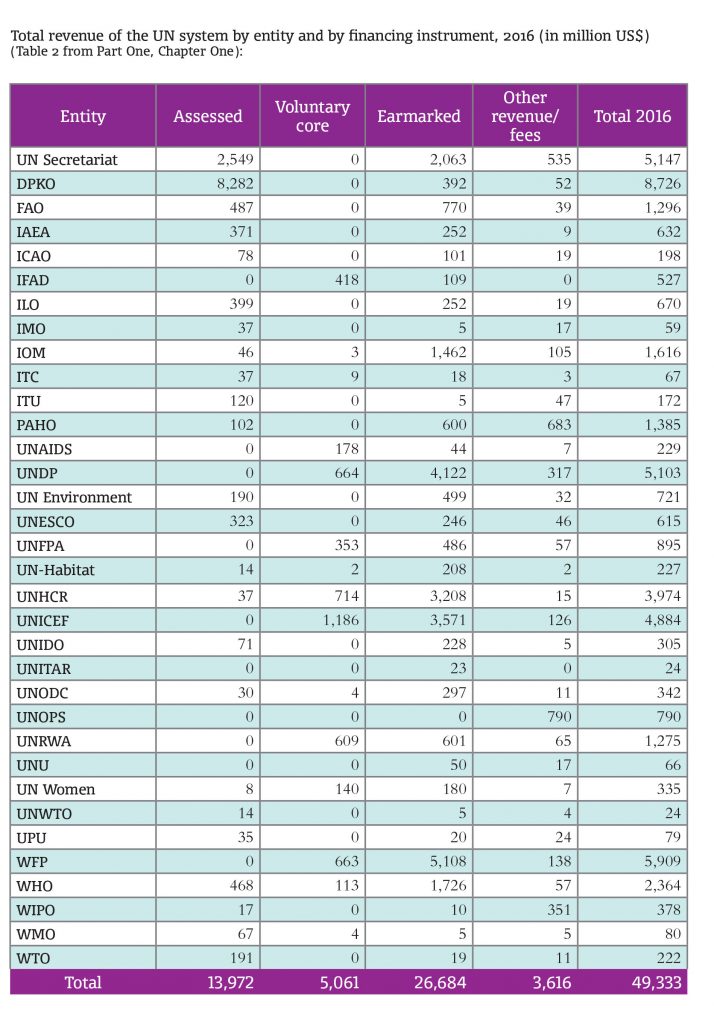Conclusion
The subtitle of this report, Opening Doors, aims to provide an image of the opportunities ahead. There are lots of different doors into new financing for the SDGs. Some are already ajar, while others require a push. They all need to be opened and explored. This report attempts to provide fresh insights into the funding of the UN development system and into its positioning within the larger 2030 Agenda financing dynamics. On one level, we describe a relatively simple-looking system, dominated by grants. A deeper analytical dive shows an increasingly complex and diverse financing context, requiring the UNDS grant resources to be positioned evermore strategically to impact much greater and more diverse financing flows.
A number of headline messages and themes emerge from the report. Getting to more funding and financing arrangements and moving away from the dominant ‘disbursement culture’ presents several real challenges. It will require a significantly different approach to defining, monitoring and measuring the impact of SDG investments. A successful new approach will need to be underpinned by a robust capacity, skill-set, expertise, language as well as more data.
In addition, the new finance architecture and approach will require a strong commitment to fact-based policy-making. The strong focus on data of the first half of the report being a conscious effort to make policymakers more aware of the basic numbers, and not least, where we have found the data lacking.
Important work remains to be done in advancing new thinking and new approaches to partnerships for financing the 2030 Agenda. The landscape of influential actors and partnerships is radically different from that which dominated the Millennium Development Goals era. The key issue is not about new public and private actors per se, but about their positioning and the role they expect to, and can, play. In addition, there is a clear evolution in the positioning of different elements of civil society. Overall there is need for a fundamental rethinking of the future relationship between public and private actors, and financial flows.
The Secretary-General’s reform agenda adopted by Member States in 2018 is designed with intent – to clear a path ahead that will reposition the UNDS for relevant and impactful support to countries in their achievement of the SDGs. The new and complex financing elements of this transformational reform vision will be essential, not optional, drivers of overall success. It is high time to push open some doors.







